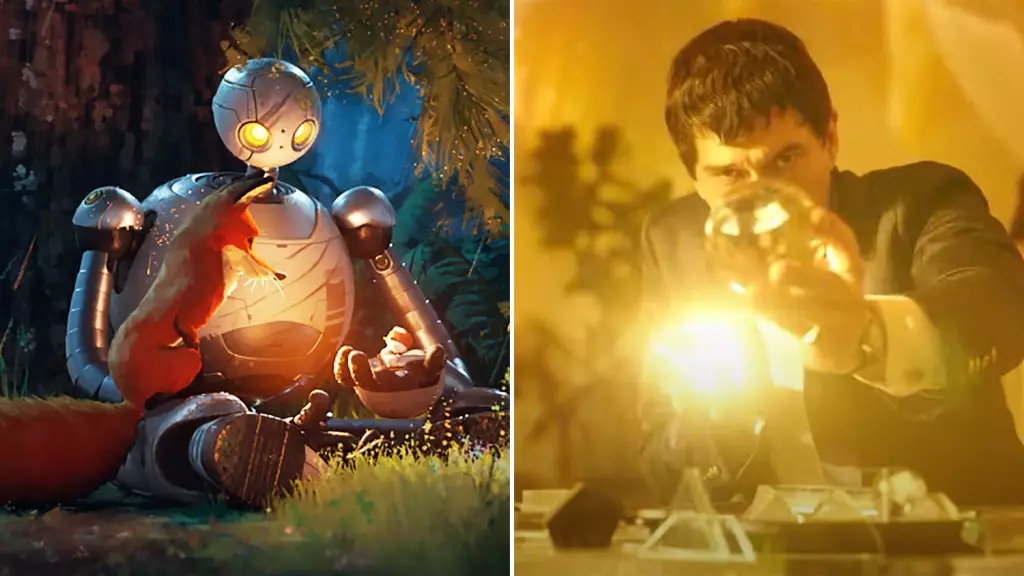Recent trends in the box office illuminate a landscape of fluctuating audience engagement and varying levels of critical reception. As movies vie for viewers’ attention, a closer examination of two contrasting releases offers insight into what might define cinematic success or failure in the current market.
DreamWorks Animation and Universal Studios recently launched their ambitious animated feature, *The Wild Robot*, which grossed an impressive $1.95 million during its preview night, commencing at 2 PM across 3,000 theaters. With voice work from Oscar-winning actress Lupita Nyong’o, the film is expected to dominate its opening weekend with projections surpassing $20 million. Such figures evoke comparisons to prior box office hits, particularly aiming to outperform *Trolls Band Together* and *The Bad Guys*, which respectively generated lower preview earnings of $1.3 million and $1.15 million, leading to opening days of $9.3 million and $7.98 million.
The early audience reception is remarkably positive, especially noted through PostTrak scores where *The Wild Robot* attracted a well-rounded collection of viewers. Achieving an outstanding 5-star rating from general audiences and parents alike, the film’s appeal is most pronounced among its child demographic, which is predominantly female. This early success in audience engagement is indicative of a strong start for DreamWorks, who meticulously crafted *The Wild Robot* based on Peter Brown’s award-winning bestseller.
However, this film’s production came with significant financial implications, costing a net budget of $78 million before accounting for marketing and promotional efforts. Despite the substantial investment, seeing an opening figure that exceeds expectations could herald a new chapter for animation in cinema, especially as audiences increasingly seek fresh narratives alongside nostalgic franchises.
In stark contrast, Lionsgate’s release of Francis Ford Coppola’s *Megalopolis* highlights the tumultuous nature of box office prospects. This $120 million self-funded project grossed a mere $770,000 during its preview, a disappointing figure that echoes the floundering initial performance of other over-budget films in recent history. Forecasts suggest an opening in the range of $5 to $7 million, indicating not only a financial catastrophe for Coppola but also a general disinterest from a contemporary audience.
The film’s mixed critical reception, scored at just 50% on Rotten Tomatoes, coupled with poor audience ratings (evidenced by a troubling 1/2 star score on PostTrak) paints a grim picture. Notably, large demographic turnout skewed towards men, with only a fraction of interest from the vital under-25 age group. These factors collectively signal a potential miscalculation on Coppola’s part regarding audience appetite for complex narratives that diverge from mainstream entertainment forms.
Despite its financial struggles, it’s crucial to recognize that *Megalopolis* represents Coppola’s cinematic vision coming to life on the big screen rather than succumbing to the streaming age. The film’s literary depth and philosophical undercurrents reflect an art form that remains valuable, even if it doesn’t translate into monetary success.
As evident in the divergent trajectories of *The Wild Robot* and *Megalopolis*, readers can recognize several trends vying for attention in the entertainment industry. Firstly, an audience tendency towards profitable franchises and family-oriented features proves decisive for successful openings. In contrast, projects with lofty budgets that have not been effectively marketed or received can lead to substantial losses.
Additionally, the impact of demographic engagement is telling. Films that resonate successfully across varied age groups—particularly those targeting families—seem to fare better as evidenced by the enthusiastic response to *The Wild Robot*. Meanwhile, introspective narratives—though potentially valuable in their artistry—struggle in a box office environment increasingly dominated by immediate gratification and emotional connection.
As the cinematic landscape remains in constant flux, stakeholders within the industry must navigate this duality of viewer preference while embracing innovative storytelling. While *The Wild Robot* could signal a resurgence for family-friendly animations, *Megalopolis* serves as a sobering cautionary tale of overreaching ambition within a market that is ultimately governed by audience alignment and expectation. The ongoing shifts in audience taste and box office outcomes will indubitably shape the future of filmmaking in profound ways.

